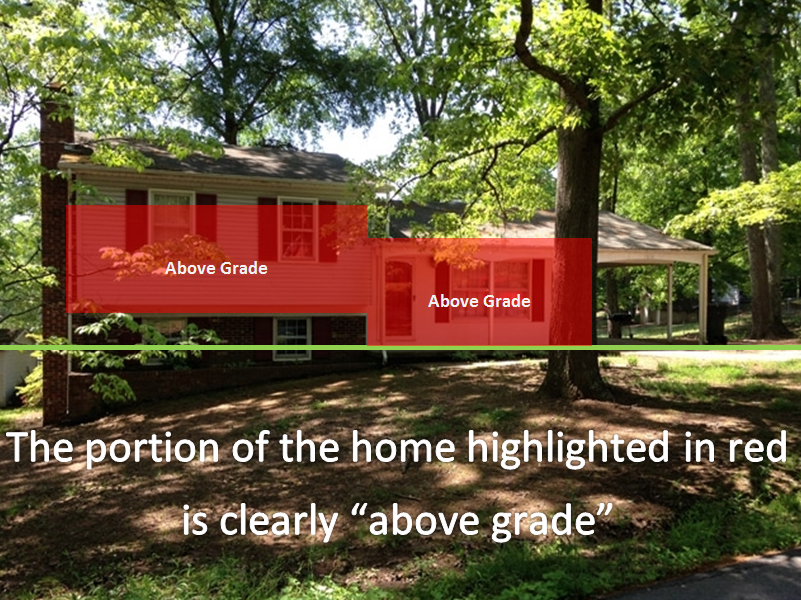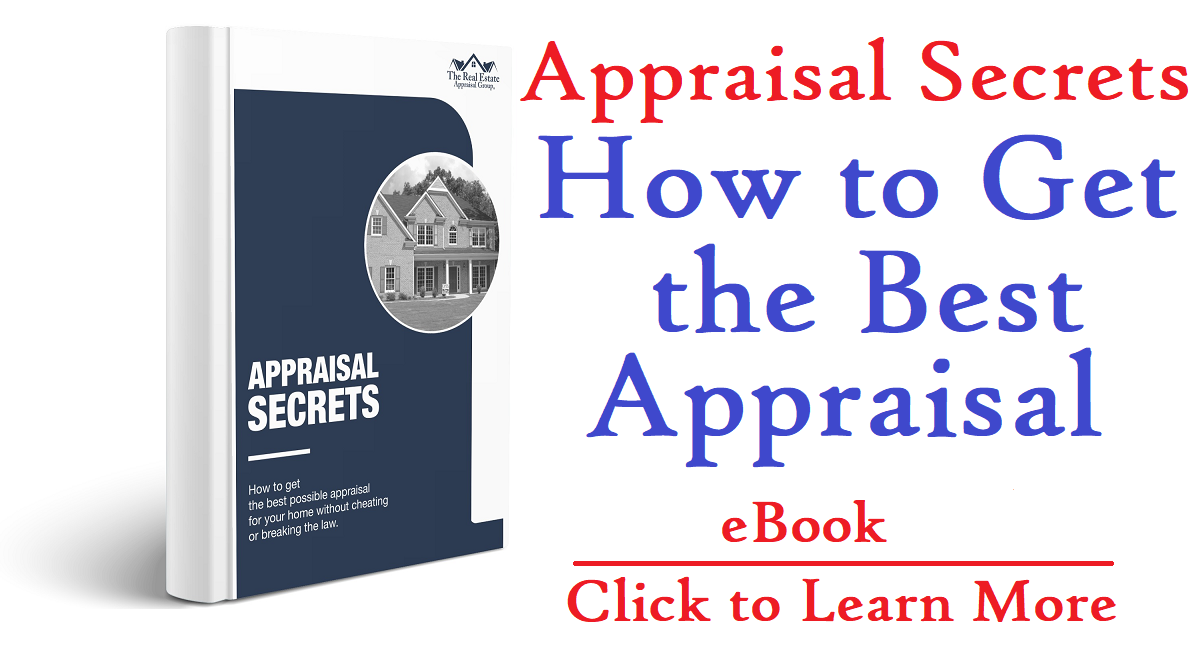
by Jonathan Montgomery | Jun 4, 2015 | Real Estate Terminology, Uncategorized
All across the country, for the majority of neighborhoods, there is a general price range where most houses in the area will fall. Most neighborhoods have a spread of about 10-15%, meaning an area with a $100,000 average sale price would have a list range around $85,000-$115,000. When homeowners make the mistake of overbuilding, they put their home’s appraised value way outside of that window. This ties in with one of the most well-known saying in real estate: “location, location, location.” Let’s look at the example of the happy family of a father, mother with a baby girl on the way, and an annoying teenage son. They live in an area of mostly 1 story, 2 bedroom houses- but they really love the area. Instead of moving into a bigger house in another neighborhood, they decide to add another story onto their home, practically doubling the gross living space. This seems like a fantastic idea- the family stays in an area they love, watching their daughter grow up in the same neighborhood as their son . But now we come to 20 years down the road- after two kids are finished with or still in college, the two exhausted parents are ready to settle down in the countryside. It’s time to sell the house. After spending upwards of $150,000 on that second story, it seems irrational not to charge more for their house. As the median sold price in the neighborhood has bounced around $50-60k across the last few years, they decide to list their home at $200,000. A month later, they list at $190,000. After...

by Jonathan Montgomery | May 27, 2015 | Real Estate Terminology, Uncategorized
Split-level homes can be confusing when it comes to square footage. After a real estate appraisal, we sometimes get questions as to why a 2,000 square foot home was listed as a home with 1,200 square foot living space. Appraisers aren’t trying to rip you off or anything; they’re just following the law. Using the above example, let’s say your home was only measured at 1,200 gross living space- what happened to the other 800 square feet? If you have a home that even slightly qualifies as a split-level, or bi-level home, that extra square footage was most likely measured as below-grade. Living space in real estate is measured in two forms: above-grade and below-grade. Typically, appraisers use the ANSI (American National Standards Institute) or the AMS (American Measurement Standard). The “grade” would be the standard ground-level or elevation for the neighborhood. Where ever you would call the topography of the property “flat” determines where ground level is. Usually the street of the property’s address is a good reference (although this is not ALWAYS the case.) Above grade living space can be defined as “any area of the home that can be heated or cooled by the utilities and is completely above ground-level. If the floor in a room or section of your house is so much as one step below ground level, it can’t be factored into the gross living space. Above grade living space is always worth much more than below grade, except under some extreme or unusual condition. This is why it’s so difficult to measure split-level homes. Below grade living space is the same...

by Jonathan Montgomery | May 20, 2015 | FHA, Real Estate Terminology, Uncategorized
For a Federal Housing Administration (FHA) loan to be approved, a home has to meet more qualifications and standards than your average conventional loan. The roof can’t leak, the wires can’t show, the floors can’t creek, the paint can’t crack… and the list goes on. and on. As FHA appraisals are a bit more complex, real estate appraisers have to get additional certification to perform them. The real estate community usually simplifies whether or not a home will qualify for an FHA loan by whether or not it satisfies the 3 S’s: Safety, Soundness, and Security. The First “S” is Safety. In FHA terms, “Safety refers to the health, habitability and sanitary condition of the property.” The majority of properties that fail an FHA appraisal do so because they aren’t safe. This applies to places in the home that could potentially harm it’s occupants. Here are just a few of the most common safety hazards that cause homes to fail an FHA appraisal: Chipping or peeling paint in homes built before 1978 Damaged or missing handrails on stairs, decks, etc. Exposed electrical wiring (anywhere) Missing carbon monoxide and smoke detectors Mold or rot anywhere in the home Utilities not being safely grounded Outdated well or septic systems Poor topography (such as a yard that doesn’t divert water flow away from the house, or a large ditch in the back yard) Signs of termite infestation The biggest question you can ask yourself when it comes to the safety test is this: would I feel comfortable letting my kids play in this home? If the answer is no, some repairs or...

by Jonathan Montgomery | Apr 1, 2015 | Uncategorized
Let’s say your real estate appraiser just inspected your property… They walked around the house a bit, measured, looked around while taking notes, shook your hand, and left. What happens now? Of course, all of the measurements and notes the appraiser took on your home can be verified- they came from your home, after all. But what about everything else? https://www.youtube.com/watch?v=vvWSFhUbXl0 Everything the appraiser didn’t get from your house- neighborhood information, comparable sales, market statistics- all this information comes from other sources.. In this quick video, I hope to give you a better understanding of where a real estate appraiser gets all the information needed to properly appraiser your property. Jonathan Montgomery is the founder and president of the The Real Estate Appraisal Group, and has been a real estate professional since 1998. He has been a broker, an investor, and currently works full-time as an appraiser. He enjoys appraising real estate in Washington D.C., Southern Maryland, and Northern Virginia. #treagroup...

by Jonathan Montgomery | Mar 26, 2015 | Real Estate Terminology, Uncategorized
What’s the real difference between leasehold, leased fee, and fee simple? https://www.youtube.com/watch?v=UY13t0QHcac&feature=youtu.be Fee Simple Fee simple is the form property ownership people are most familiar with. The term means you have absolute ownership- you own the rights to the entire property, including the land and buildings on it. This is often called “The bundle of rights.” You can occupy the property, you could rent out a room, you could paint it purple. And provided your local laws allow it; you can re-zone it, you can sub-divide it, add square footage, tear it down, whatever you want. It’s your property. Leased Fee & Leasehold When there is a lease involved, the landlord has leased fee ownership, and the tenant has leasehold rights. When a property owner wants to lease out a portion of their property, usually they do so because they want to make money. They want to collect a fee. They want to collect that fee from someone who wants to occupy their property- that person want’s to hold the rights to live there, or to occupy the property. If you get in an argument with your landlord (who has leased fee ownership) and he or she tells you to pack your things and leave, you don’t have to. Assuming the lease says so, you have the rights to occupy the property (why would you sign a lease that says otherwise?), meaning your landlord would have to formerly evict you. Leasehold rights are less significant when we are discussing renting a room or house. Typically they are more important when you are talking about owning a property where you own...








Recent Comments